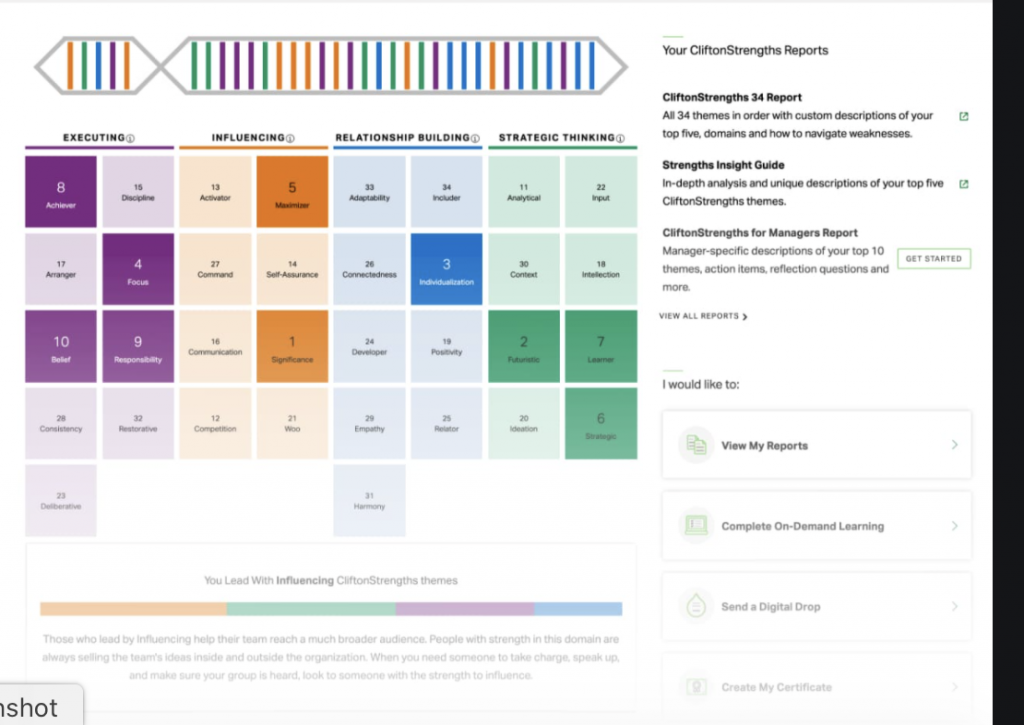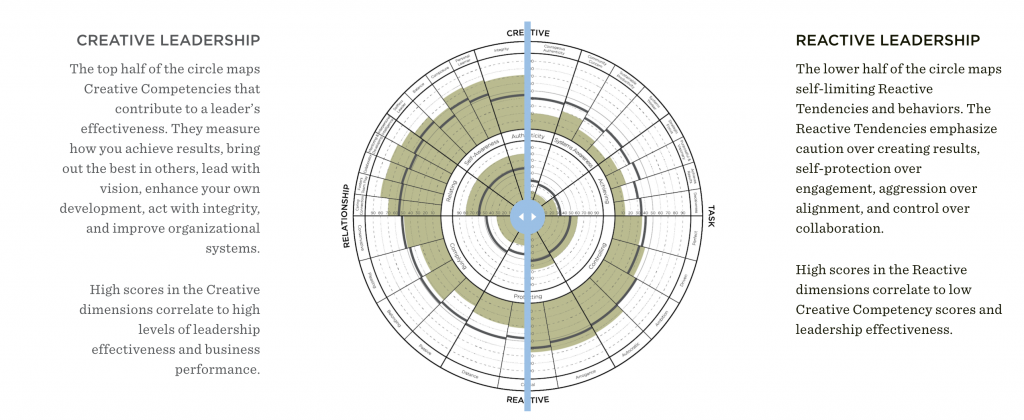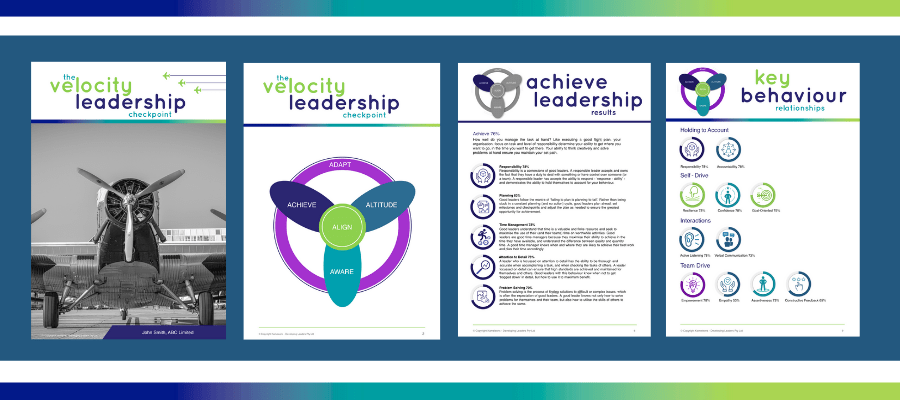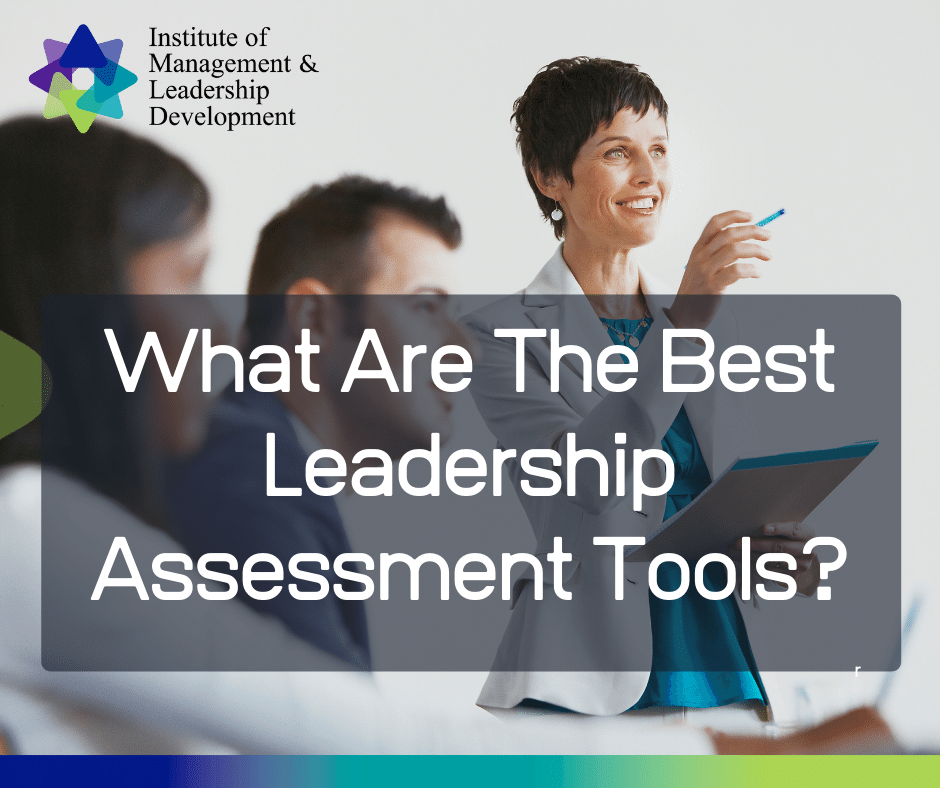What are the best leadership assessment tools to assist you in becoming a better leader? Understanding your leadership qualities, as well as your leadership strengths and areas of development is a solid first step. A well designed leadership assessment tool and debrief should be the starting point for any leader looking to systematically develop their leadership qualities, their leadership behaviours and their leadership skills. Leadership assessments can give you insight into areas where you need to focus more attention and help you reinforce the skills that you excel at. The results may surprise you and influence your development efforts.
Why Leadership Assessment?
Businesses as well as individual leaders use a leadership assessment to understand and develop a persons leadership capability across a number of areas. With literally hundreds of potential leadership assessments out there, it is important to consider carefully what tool you will invest time, money and effort implementing.
Criteria for a Good Leadership Assessment Tool
In assessing the best leadership assessment tools, we used the following criteria:
- Ease of Understanding. Many leadership tools create their own language or terms that require interpretation by the user rather than use easy to understand language. We focussed those that don’t require a psychology degree or a dictionary to explain leadership traits or behaviours
- Will it generate action? Many leader assessment tools can create discussion, but are the results clear enough to provide a leader with some clearly defined points of action. Knowing that someone is a ‘compliance’ leader or ‘feeling’ leader may sound good at first, but does it lead you to adapt or change a behaviour? If it can’t, it didn’t rate well.
- Can a real person debrief it? A detailed leadership assessment tool should require some interpretation and debrief. More often than not, a leadership trait will relate or influence another leadership trait (ie. confidence with communication, responsibility with accountability), which is not easily explained when only a report is provided (leaving the user to make the connections). Having a leadership expert or coach able to make the connections for you and highlight more / less important traits is important for leadership development.
- More specific and less generic traits. If a leadership assessment tool has very specific traits to assess, then it often asks very specific questions – which generates more accurate results. If a tool asks wide and varied questions and groups the results into 3 or 4 behaviours, it is going to be less accurate. We prefer specific over generic traits, providing the leader with detail rather than a large list of ‘possible’ behaviours you have to choose from.
- More leadership, less personality. A good leadership tool not only highlights leadership behaviours, it should be able to be used again, providing an opportunity to test and measure against previous results. If the test is more a personality test and less a leadership assessment, it is less likely to be able to be used for solid and dependable leadership development.
The Well Known Leadership Assessment Tools We Discarded
If you look at almost any list of leadership assessment tools, you will almost always see two on the list – the Myers-Briggs Type Indicator and the DISC Personaility profile. While these tests are wildly popular and used in many leadership courses, their results are questionable. Without doubt, both of the tests can start a discussion between leaders and leadership groups, which is a great start to a leadership discussion. In our experience though, the discussion is often gets reduced to ‘I’m an ENTJ, what are you?’ or ‘I am an D leader’, without actually understanding what that means.
MBTI Type Indicator
Developed in the 1920s by Katherine Briggs and Isabel Briggs Myers, the MBTI is primarily a personality test. The MBTI test generates discussion which quickly degenerates to a 4-letter abbreviation rather than an understanding of leadership behaviours. The terminology is vague and general and not necessarily important to leadership (a good leader can be both introverted and extroverted). In addition, most people on the scale ended up in the middle of the range. Being a personality test, it is not designed to be used again or demonstrate / represent improvement in leadership traits between assessments.
DISC Assessment
Based on the 1928 work of psychologist William Moulton Marston, the DISC tool is designed to predict job performance, not leadership skill. Because the descriptors are not easily understood, most people reduce their understanding to identifying with one letter. Traits provided are generic and related to personality rather than leadership. Because of this, the tool is not designed to be used again and again, limiting its use for leadership development.
The Top 5 Best Leadership Assessment Tools
In no particular order, we rated the following leadership assessment tools as the best for developing leadership skills and behaviours:
Gallups Strength Finder (formerly Cliftons StrengthFinder)
True to its name, the test gives you well-detailed information about a person’s strengths. The test is widely used to identify where a person can perform the best and suggests areas to improve. The Clifton Strengths Assessment is ideal for personal coaching purposes as it helps them identify the fields they are best at, however it is limited in traits that relate to team behaviour.
The tool motivates the individuals to work on their strengths, instead of developing their weaknesses. It figures out your top 5 traits/strengths from a large selection of behaviours and gives constructive feedback to improve the same.
 Clifton Strengths
Clifton StrengthsThe Leadership Circle
The Leadership Circle assessment provides an executive with feedback on how others experience their leadership; the real power comes from the perspective and insights gained around Creative Competencies and Reactive Tendencies – and integrates this information for immediate opportunities for leadership development. The results look incredibly complicated at first glance and require some interpretation for a skilled provider, but the insights gained are specific and very useful for developing leaders. The depth and volume of questions means that it can be used again without too much fear of ‘gaming’ the answers.
 The Leadership Circle
The Leadership CircleVelocity Leadership CheckPoint
The Velocity Leadership CheckPoint is an assessment tool designed for leadership coaching and training programs, seeking to measure before and after development initiatives – it is stated as a ‘checkpoint’ or snapshot in time. The VLC considers 25 behavioural leadership traits, focussed in 5 distinct leadership capabilities: Alignment, Achievement, Awareness, Altitude and Adaptability. The 25 traits are specific and measured in %, and because of the links and relationships between the traits, it is best to complete with a specific debrief. Results are specific and provide leaders with clear guidance on what to do to develop their leadership skills and behaviours.
 Velocity Leadership CheckPoint
Velocity Leadership CheckPointEnneagram
The term Enneagram means ‘Nine Types’ and categorises people’s behaviour into 9 types with 9 subtypes for each section. In total, this assessment groups the people’s traits and behaviour into 81 different categories. It is this variably from person to person that makes enneagram a useful leadership tool; the results require interpretation and are not generic in nature.
The complexity of this tool is one of the reasons we love it, but it is seen as a downside for many organisations looking for a simpler, surface level discussion of personality traits.
 Enneagram
EnneagramUSC Leadership Style Self Assessment
At the other end of the ease of use scale, USC’s Leadership Style Self -Assessment is based on this simple idea that leadership is first built on having an accurate perception of self. The six-leadership style envisioned by this leadership assessment test are: Servant, Front-Line, Transformational, Metamodern, Postmodern and Contrarian. While the 6 types take some explanation (defying our ease of use criteria), the behaviours are focussed on leadership rather than personality, which is a plus. A downside is that the tool doesn’t help identify strengths and weaknesses, and because of the small number of questions used to determine results, users can guess the ‘right’ answers if used multiple times. That said, this tool is a good start point for leadership development that is relatively simple to use and understand.
Conclusion
If you are looking to develop your leadership skills and behaviours, we recommend undertaking at least one of the leadership assessments tools above. Providing yourself with an accurate picture of your current skills, as well as some guidance on building and developing those skills further, is an easy step an executive, small business owner or supervisor can take to be come better at leading their people.
Related Articles:
What Are The Best Leadership Assessment Tools?



